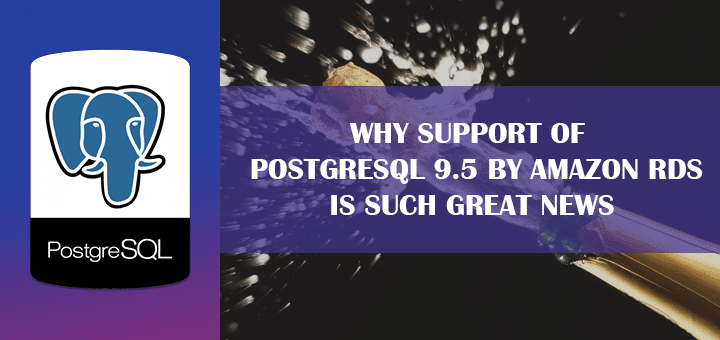Amazon has recently announced that Amazon RDS for PostgreSQL will now be supporting PostgreSQL 9.5. We have gathered all main information about this update and are ready to explain to you why it is great news.
What is PostgreSQL?
PostgreSQL is probably one of the most popular object-relational database management systems. It popularity can be explained by the fact that it is a cross-platform solution with great room for scalability and replication. Besides, since it is open-source software, it is extending really quickly, offering developers from all over the world plenty new features and options.
OK, and what is Amazon RDS?
Amazon RDS, which stands for Relational Database Service, is a cloud-based service for database scaling and management. It is a useful tool for database administration, backups and point-in-time recovery that is widely used by developers. Among its main features are multi AZ deployment, and ability to read Replicas.
Now I’m listening
As practice shows, Amazon RDS, while being a great tool, is pretty slow with supporting new versions of database systems. Which is a little frustrating, since I deprives one from using the latest tools and features. And developers really love releases.
So it is really good news that since April 8 Amazon RDS will be supporting PostgreSQL 9.5.
Let’s have a look at the main features that will become available:
1. Row Level Security introduced
With RLS you will be able to access and control data per row or per column. This offers you new level of control over your data.
2. Shorthand created for “Insert, on Conflict Update”
This would let you manage conflicts easier, since new and updated rows are treated the same as old ones.
3. Big Data integration
The update includes support of BRIN indexation, which is great for working with big amounts of data. For example it makes possible indexing, sorting abbreviated keys and Numeric fields much faster.
4. Statistical samples
Using “Tablespace” you will be able to create great statistical samples even with enormous amount of data, which would let you avoid the consuming sorting.
5. New reports options
“Cube”, “Rollup” and “Grouping Sets” features provide plenty options for report generation. Besides, one can include OLAP tools in them, which provides even better level of summarization.
As you see, Amazon RDS is moving forward with supporting new technologies. We here, in Rubyroid Labs, are especially happy with that, since we are actively using it for our projects. So each update only increases the options we can use.
Questions? Comments? Let’s talk about them in the comments section below.



